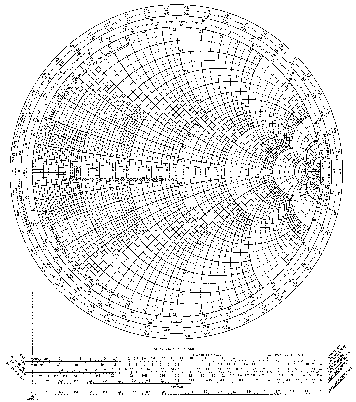Exploring the secrets of the Smith chart* - an indispensable tool

An article appeared in the January, 1939 issue of Electronics that changed forever the way radio engineers think about transmission lines.
Phil Smith devised an extraordinarily clever circular chart that revealed graphically the complex impedance anywhere along a line. The chart also functioned as a units converter. Virtually no math and minimum fuss. There's marvelous symmetry in it's design - everything fits together neatly. So ingenious was his invention that it became the standard of the industry, and remains so today.
If you're a Radio Engineer wannabe, you need to understand transmission lines. It's impossible to really understand transmitters and antennas without understanding lines. Using the Smith chart is far easier than really understanding the math. The chart gives you a way to think about impedance matching, line loss, and - you will join the ranks of those who have a clear understanding of VSWR - a very misunderstood subject.
This note is not really a chart primer. I will just touch on a few key elements. You must spend about three hours or so with one of the excellent tutorials available and do some exercises to get started. . One good one is in the ARRL antenna book, available from arrl.org. A sharp cookie named Nathan Iyer wrote a very nice program which is available for free called Quicksmith; it presents the graphical Smith representation, and allows you to play "what if" with the values of loads, lines, and lumped L-Cs. It also allows you to sweep values and frequency - very useful for broadband impedance matching. This is an excellent way to get started - as you experiment with matching networks you can see how the impedance moves on the chart. Another excellent free tool is appcad from Hewlet-Packard (Agilent). This incorporates a smith chart view into some useful RF design tools.
Let's discuss just a few things to get you started. The center of the chart is always a perfect match, which normally represents fifty ohms, but can be any impedance you want- it's normalized to 1.0 units, 1 unit = 50 ohms for instance. Everything else on the chart is then scaled relative to your chosen 1.0 unit. The nature of impedance is that of a real (or resistive) portion, and an "imaginary", or reactive portion. These two combine to form impedance using straightforward Pythagorean right-triangle math.
The last items I'll mention are the "goalposts" - four of them spaced 90 degrees graphically and 45 degrees electrically apart. Two goalposts are resistive, one a short and the other an open. These are the left and right respective sides. The top and bottom posts are reactive, either (+) inductive, or (-) capacitive. Every point in between represents the various combinations resulting from a mismatched condition, and shows what will be required to form the conjugate matching circuit.
Most RF engineers can't live without it. As much as it pains me to link you away from my site, in the educational spirit I would encourage a Google search of: "smith chart" + Analog Instruments Company. There are many excellent tutorials currently on line.
And now for
the chart! - not exactly Smith, but very nice download
(250K .gif)
This flavor is Postscript - great programming download
(24K .ps)
Go to W4NEQ Main Page